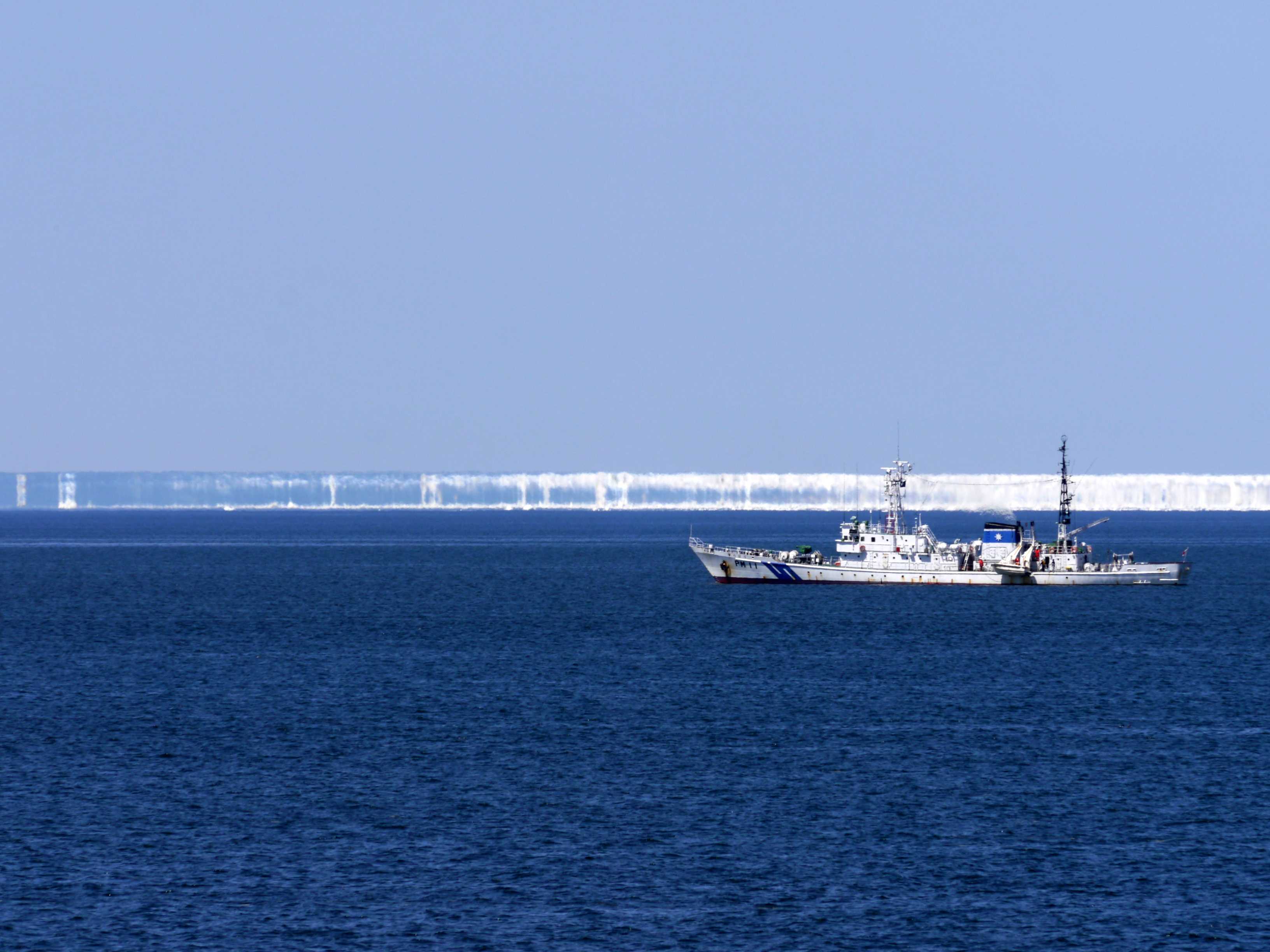Mirage
(Section 3.2.3.7)Definition: Mirage: An optical phenomenon consisting mainly of images of distant objects. These may be steady or wavering, single or multiple, upright or inverted, vertically enlarged or reduced.
Objects seen in a mirage sometimes appear at a different angle above the horizon than they really are. The difference may be as much as 10°. Objects located below the horizon or hidden by mountains may become visible (“looming”), and objects that are visible under normal circumstances may disappear during the occurrence of a mirage.
Mirages are due to the curving of light rays passing through layers of air with changing refractive index because of differences in temperature and thus density. Therefore, they are generally observed when the temperature of the Earth’s surface differs greatly from the air above.
A mirage may occur as a lower mirage (inferior mirage) over intensely heated water surfaces, soils, beaches, roads, etc., or as an upper mirage (superior mirage) over snow fields, cold sea surfaces, etc.
The most common inferior mirage is that seen over a hot road surface or a desert surface, giving the illusion of an area of water on the surface. It is caused by the upward refraction of light from the clear sky towards the observer. In an inferior mirage, the image of a distant object is displaced downwards (for example, light from the sky appears as though it is water on the ground). Strong bending of light can create several erect and inverted images.
A superior mirage is seen above a flat surface of much lower temperature than the air above it. In this case, light from an object is bent downwards towards the observer, making distant objects appear higher than their true positions.
A Fata Morgana is a very complex superior mirage, usually seen in polar regions, and is created by an unusual density profile in which horizontal and vertical distortion, inversion and elevation of objects occur in changing patterns. One well-known example not occurring in the polar regions is the Fata Morgana that can be seen on the distant mountains of Sicily when viewed from over the cold waters of the Straits of Messina.
A mirage of astronomical objects, such as the Sun or Moon and occasionally planets, bright stars and bright comets, may produce distorted or multiple images of the object. The most commonly observed are sunset and sunrise mirages.
In circumstances where a warm layer of air at the surface, usually over the sea, is overlaid by cold air above, an inferior mirage may be formed. As the Sun lowers towards the horizon, a miraged (inverted) Sun rises. Eventually, they meet to form an “omega” shape (after the Greek letter). This is also known as an “Etruscan vase”.
When warmer air overlays colder surface air, and when viewed from above the inversion, a mock mirage may be seen. Multiple inversions may give rise to considerably distorted images of the Sun.
The Novaya Zemlya effect is the premature visibility of the Sun at the end of the polar winter night. It is caused by strong refraction of sunlight through a large-scale temperature inversion with a sharp thermocline (optical ducting). The light is bent along the Earth’s curvature over a great distance, and a distorted Sun, in the form of a square or line(s) is seen above the horizon when the actual position of the Sun is still below the horizon.




